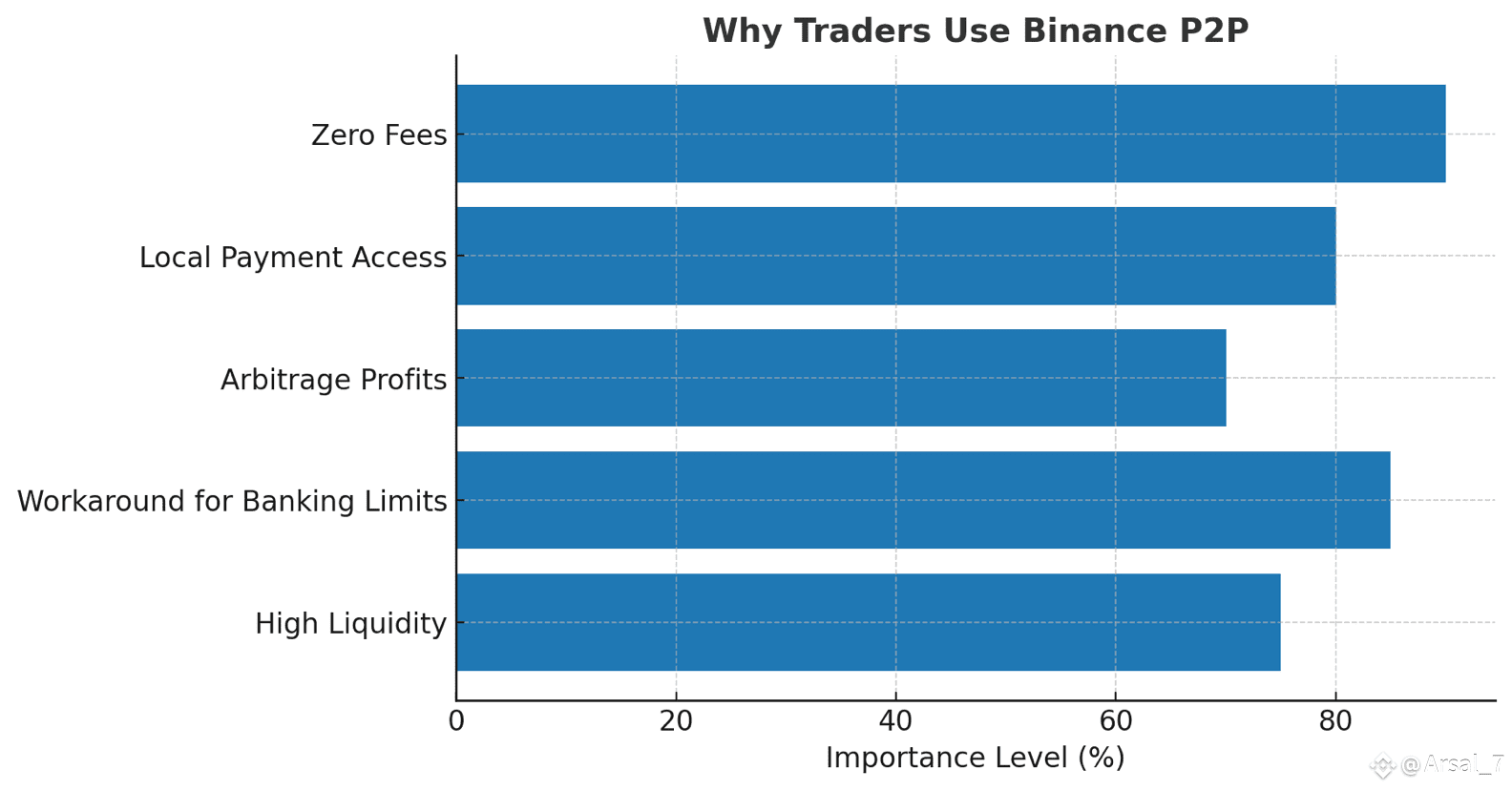In the world of crypto, most traders think first of charts, order books, and exchange fees. But behind the scenes, a quieter market has been growing — one that moves billions every day without ever touching a traditional exchange order book.
That market is Binance P2P (Peer-to-Peer) trading
🔎 What Is Binance P2P?
Binance P2P is a marketplace inside the Binance ecosystem where users buy and sell crypto directly with each other. Instead of placing trades against market makers, you negotiate directly with another user, often using local payment methods like bank transfers, mobile wallets, or even cash-in-person (depending on your region).
The platform acts as a secure escrow service — holding the crypto until both sides confirm payment. This removes much of the trust risk that plagues informal OTC deals.
💡 Why Do Traders Use It?
Zero Trading Fees → Binance charges no fees for P2P trades, making it attractive for high-frequency or bulk buyers.
Local Payment Flexibility → In countries with banking restrictions, P2P allows direct on/off ramps.
Market Access → Traders can buy USDT, BTC, ETH, and more in their local currency without relying on traditional exchanges.
Arbitrage Opportunities → Price differences between P2P and spot markets create profit opportunities.
Capital Control Workaround → In regions with strict banking rules, P2P becomes a financial lifeline.
⚠️ The Risks You Don’t See
While Binance P2P provides a safer layer than informal OTC, risks remain — and many traders underestimate them:
Frozen Accounts → If your counterparty uses fraudulent funds, your receiving account can still be flagged.
Payment Disputes → Escrow protects crypto, but fiat side disputes can drag on.
Price Manipulation → Some sellers bait with “low prices” but add hidden conditions.
Operational Risk → Frequent large transfers, odd transaction times, or mismatched sender names can trigger banking red flags.
🛡️ Best Practices for Survival
Trade with Verified Merchants → Look for long-standing sellers with high completion rates.
Use Dedicated Bank Cards → Keep P2P activity separate from personal banking.
Hold Funds Temporarily → Don’t move received funds immediately; wait at least 24–72 hours.
Stay Professional with Remarks → Never write “crypto,” “USDT,” or “Binance” in transaction notes. Use neutral terms.
Split Large Orders → Reduces visibility and lowers compliance risk.
🌍 Why Binance P2P Matters Globally
Binance P2P isn’t just a trading tool — it’s a bridge between traditional finance and crypto in places where banks and exchanges don’t play nicely.
In emerging markets, it enables entrepreneurs to access stablecoins like USDT for cross-border trade.
For freelancers, it provides a way to get paid in crypto and cash out locally.
For arbitrage traders, it’s a constant source of spread opportunities.
In short, Binance P2P is not a side feature — it’s a shadow backbone of global crypto adoption.
🎯 Final Take
P2P trading on Binance represents both opportunity and risk. It’s cheaper, flexible, and accessible — but it’s also a minefield if you ignore compliance details.
In the coming years, as regulations tighten, P2P will either become the regulated lifeline for crypto users worldwide or the first target of financial crackdowns.
Until then, smart traders treat Binance P2P not as a shortcut, but as a professional tool that demands discipline.


